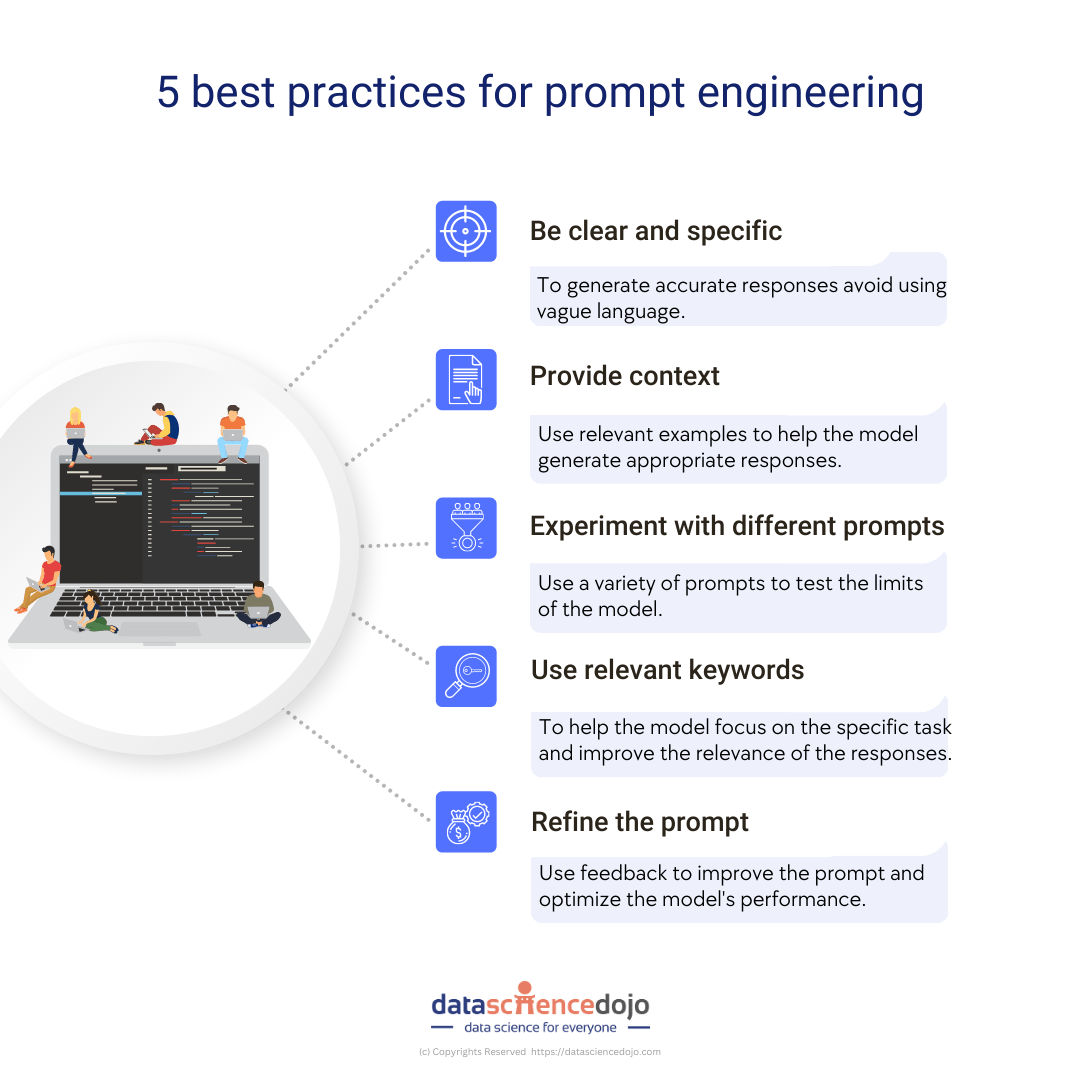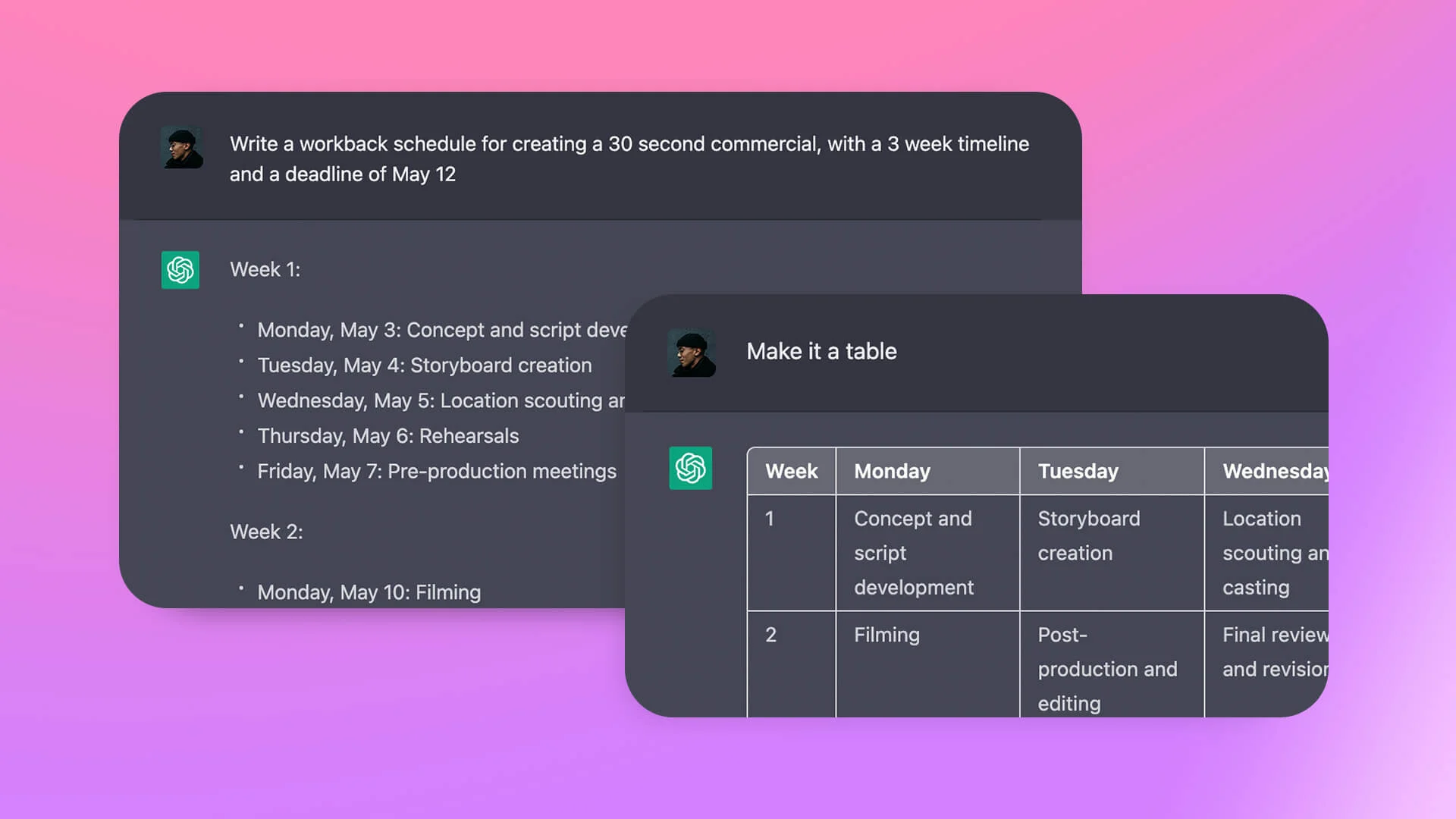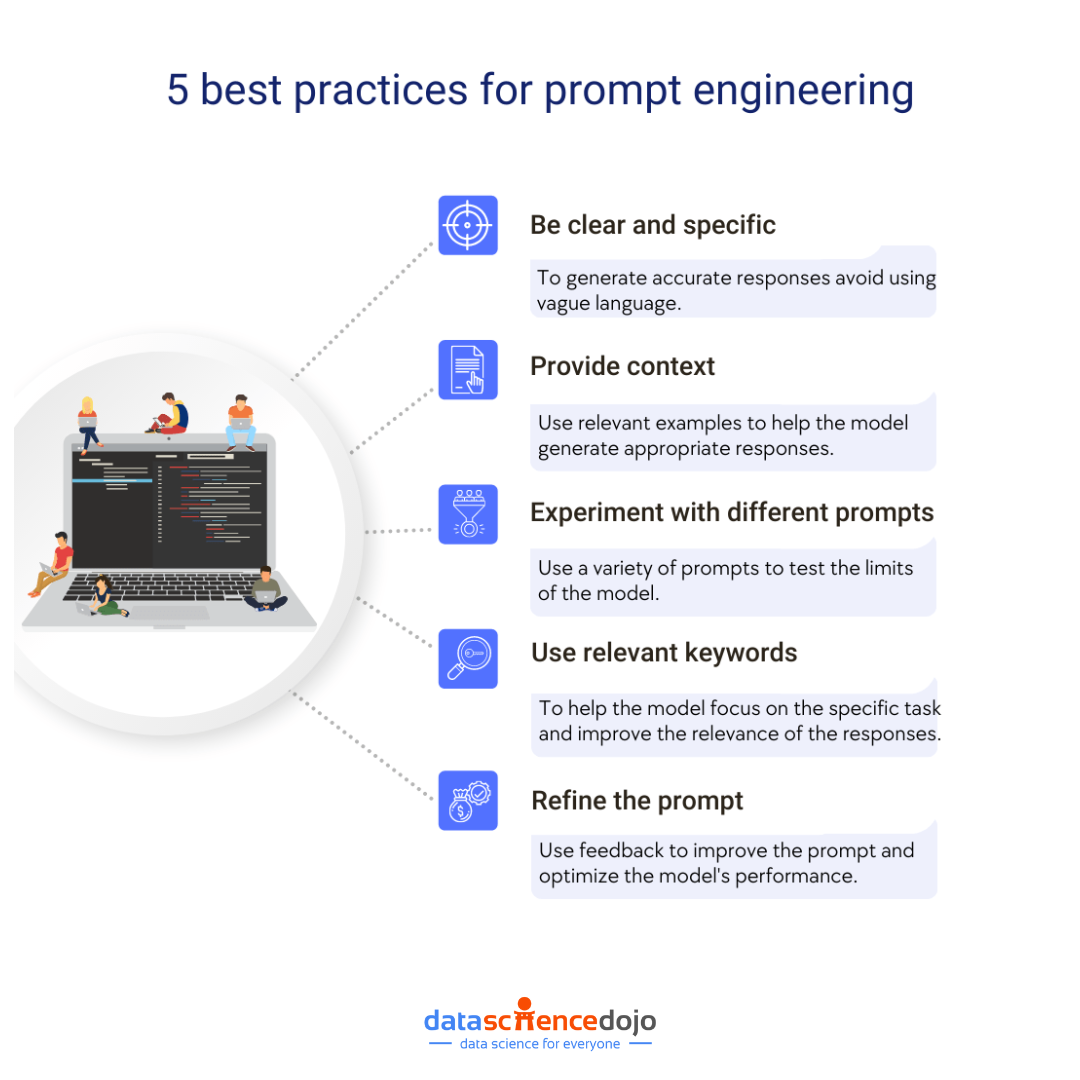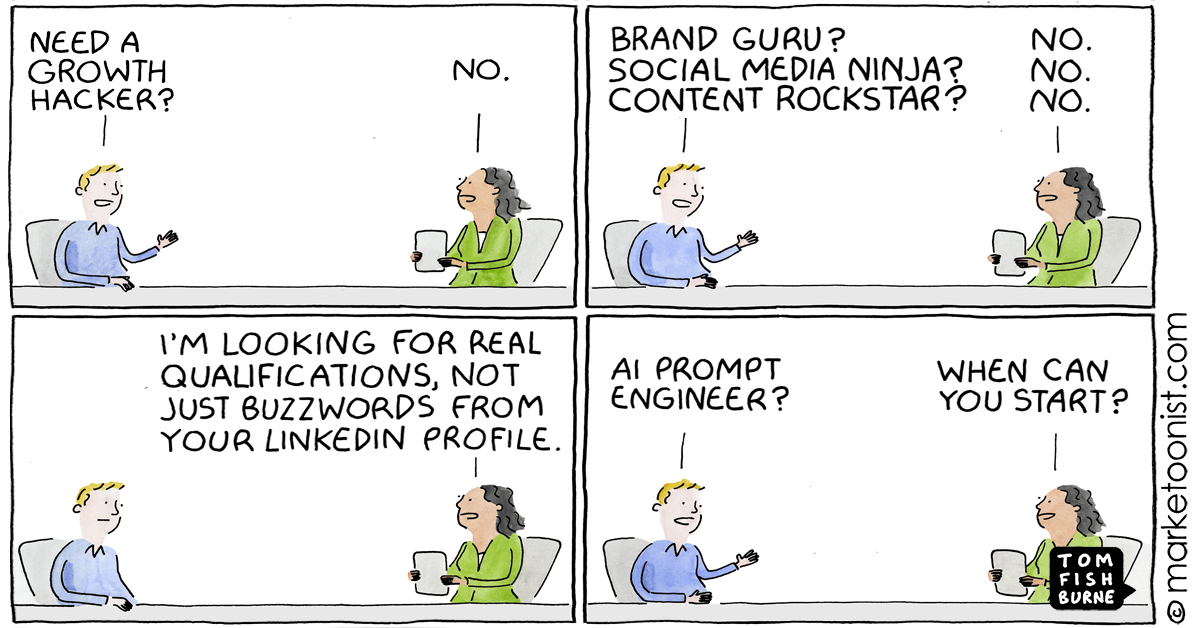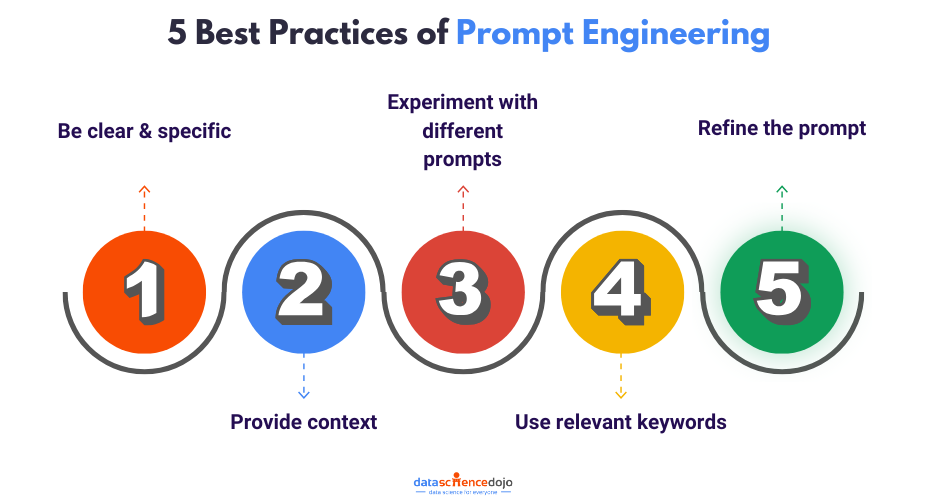AI video generators are tools leveraging artificial intelligence to automate and enhance various stages of the video production process, from ideation to post-production. These generators are transforming the industry by providing new capabilities for creators, allowing them to turn text into videos, add animations, and create realistic avatars and scenes using AI algorithms.
An example of an AI video generator is Synthesia, which enables users to produce videos from uploaded scripts read by AI avatars. Synthesia is used for creating educational content and other types of videos, which was once a long, multi-staged process that’s now been condensed into using a single piece of software.
Additionally, platforms like InVideo are utilized to quickly repurpose blog content into videos and create video scripts, significantly aiding marketers by simplifying the video ad creation process.
Read more about Effective strategies for prompt engineering
These AI video generators not only improve the efficiency of video production but also enhance the quality and creativity of the output. Runway ML is one such tool that offers a suite of AI-powered video editing features, allowing filmmakers to seamlessly remove objects or backgrounds and automate tasks that would otherwise take significant time and expertise.
Another aspect includes adding video clips or memes to make videos more engaging. It can be done using a free video downloader, leading to greater diversity in your visual content.
7 Prompting Techniques to Generate AI Videos
Here are some techniques for prompting AI video generators to produce the most relevant video content:
- Define clear objectives: Specify exactly what you want the video to achieve. For instance, if the video is for a product launch, outline the key features, use cases, and desired customer reactions to guide the AI’s content creation.
- Detailed Script Prompts: Provide not just the script but also instructions regarding voice, tone, and the intended length of the video. Make sure to communicate the campaign goals and the target audience to align the AI-generated video with your strategy.
- Visual Descriptions: When aiming for a specific visual style, such as storyboarding or art direction, include detailed descriptions of the desired imagery, color schemes, and overall aesthetic. Art directors, for instance, use AI tools to explore and visualize concepts effectively.
- Storyboarding Assistance: Use AI to transform descriptive text into visual storyboards. For example, Arturo Tedeschi utilized DALL-E to convert text from classic movies into visual storyboards, capturing the link between language and images.
- Shot List Generation: Turn a script into a detailed shot list by using AI tools, ensuring to capture the desired flow within the specified timeframe.
- Feedback Implementation: Iterate on previously generated images to refine the visual style. Midjourney and other similar AI text-to-image generators allow for the iteration process, making it easy to fine-tune the outcome.
- Creative Experimentation: Embrace AI’s unique ‘natural aesthetic’ as cited by filmmakers like Paul Trillo, and experiment with the new visual styles created by AI as they go mainstream.
By employing these techniques and providing specific, detailed prompts, you can guide AI video generators to create content that is closer to your desired outcome. Remember that AI tools are powerful but still require human guidance to ensure the resulting videos meet your objectives and creative vision.
Read about: 10 steps to become a prompt engineer
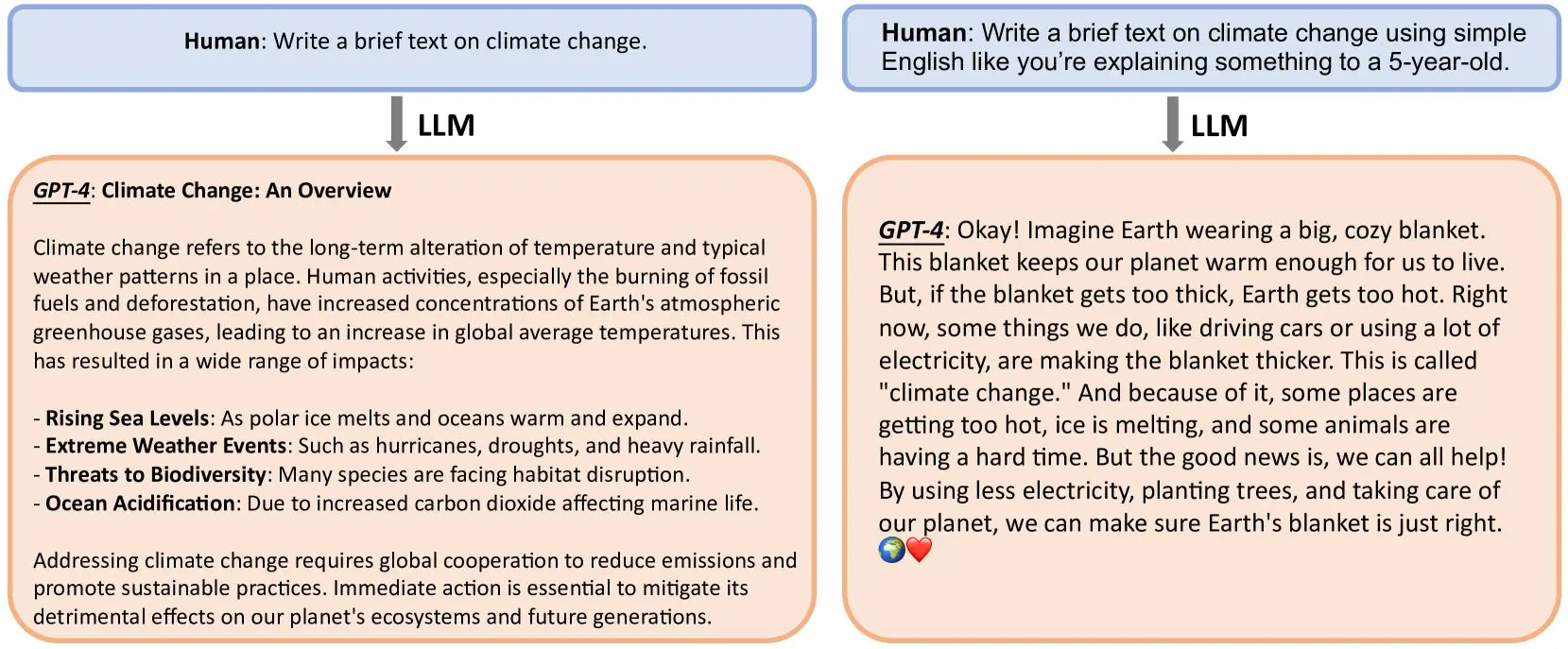
Prompt Examples to Generate AI Videos
Certainly! Here are some examples of prompts that can be used with AI video generation tools:
Prompt for a product launch video:
“We want to create a product launch video to showcase the features, use cases, and initial customer reactions and encourage viewers to sign up to receive a sample product. The product is [describe your product here]. Please map out a script for the voiceover and a shot list for a 30-second video, along with suggestions for music, transitions, and lighting.” 1
Prompt for transforming written content to video format:
“Please transform this written interview into a case study video format with shot suggestions, intro copy, and a call to action at the end to read the whole case study.” 1
Explore more about prompt engineering to unlock its full potential
Prompt for an AI-generated call sheet:
“Take all characters from the pages of this script and organize them into a call sheet with character, actor name, time needed, scenes to be rehearsed, schedule, and location.”
Art direction ideation prompt:
“Explore art direction concepts for our next video project, focusing on different color schemes and environmental depth to bring a ‘lively city at night’ theme to the forefront. Provide a selection of visuals that can later be refined.”
AI storyboarding prompt using classic film descriptions:
“Use DALL-E to transform the descriptive text from iconic movie scenes into visual storyboards, emphasizing the interplay between dialogue and imagery that creates a bridge between the screenplay and film.”
These examples of AI video generation prompts provide a clear and structured format for the desired outcome of the video content being produced. When using these prompts with an AI video tool, it’s crucial to specify as many relevant details as possible to achieve the most accurate and satisfying results.
Quick Prompting Test For You
Here is an interesting read: Advanced prompt engineering to leverage generative AI
Impact of AI Video Generators on Art Industry
Automation of Creative Processes: AI video generators automate various creative tasks in video production, such as creating storyboards, concept visualization, and even generating new visual effects, thereby enhancing creative workflows and reducing time spent on manual tasks 2.
Expediting Idea Generation: By using AI tools like ChatGPT, creative teams can brainstorm and visualize ideas more quickly, allowing for faster development of video content concepts and scripts, and supporting a rapid ideation phase in the art industry .
Improvement in Efficiency: AI has made it possible to handle art direction tasks more efficiently, saving valuable time that can be redirected towards other creative endeavors within the art and film industry .
Enhanced Visual Storytelling: Artists like Arturo Tedeschi utilize AI to transform text descriptions from classical movies into visual storyboards, emphasizing the role of AI as a creative bridge in visual storytelling .
Democratizing the Art Industry: AI lowers the barriers to entry for video creation by simplifying complex tasks, enabling a wider range of creators to produce art and enter the filmmaking space, regardless of previous experience or availability of expensive equipment 12.
New Aesthetic Possibilities: Filmmakers like Paul Trillo embrace the unique visual style that AI video generators create, exploring these new aesthetics to expand the visual language within the art industry .
Redefining Roles in Art Production: AI is shifting the focus of artists and production staff by reducing the need for certain traditional skills, enabling them to focus on more high-value, creative work instead 2.
Consistency and Quality in Post-Production: AI aids in maintaining a consistent and professional look in post-production tasks like color grading and sound design, contributing to the overall quality output in art and film production.
Innovation in Special Effects: AI tools like Gen-1 apply video effects to create new videos in different styles, advancing the capabilities for special effects and visual innovation significantly.
Supporting Sound Design: AI in the art industry improves audio elements by syncing sounds and effects accurately, enhancing the auditory experience of video artworks.
Facilitating Art Education: AI tools are being implemented in building multimedia educational tools for art, such as at Forecast Academy, which features AI-generated educational videos, enabling more accessible art education.
Optimization of Pre-production Tasks: AI enhances the pre-production phase by optimizing tasks such as scheduling and logistics, which is integral for art projects with large-scale production needs.
The impacts highlighted above demonstrate the multifaceted ways AI video generators are innovating in the art and film sectors, driving forward a new era of creativity and efficiency.
Emerging Visual Styles and Aesthetics
One emerging visual style as AI video tools become mainstream is the “natural aesthetic” that the AI videos are creating, particularly appreciated by filmmakers such as Paul Trillo. He acknowledges the distinct visual style born out of AI’s idiosyncrasies and chooses to lean into it rather than resist, finding it intriguing as its own aesthetic.

Tools like Runway ML offer capabilities that can transform video footage drastically, providing cheaper and more efficient ways to create unique visual effects and styles. These AI tools enable new expressions in stylized footage and the crafting of scenes that might have been impossible or impractical before.
AI is also facilitating the creation of AI-generated music videos, visual effects, and even brand-new forms of content that are changing the audience’s viewing experience. This includes AI’s ability to create photorealistic backgrounds and personalized video content, thus diversifying the palette of visual storytelling.
Furthermore, AI tools can emulate popular styles, such as the Wes Anderson color grading effect, by applying these styles to videos automatically. This creates a range of styles quickly and effortlessly, encouraging a trend where even brands like Paramount Pictures follow suit.
In summary, AI video tools are introducing an assortment of new visual styles and aesthetics that are shaping a new mainstream visual culture, characterized by innovative effects, personalized content, and efficient emulation of existing styles.
Future of AI Video Generators
The revolutionary abilities of these AI video generators promise a future landscape of filmmaking where both professionals and amateurs can produce content at unprecedented speed, with a high degree of customization and lower costs.
The adoption of such tools suggests a positive outlook for the democratization of video production, with AI serving as a complement to human creativity rather than a replacement.
Moreover, the integration of AI tools like Adobe’s Firefly into established software such as Adobe After Effects enables the automation of time-consuming manual tasks, leading to faster pre-production, production, and post-production workflows. This allows creators to focus more on the creative aspects of filmmaking and less on the technical grunt work.




